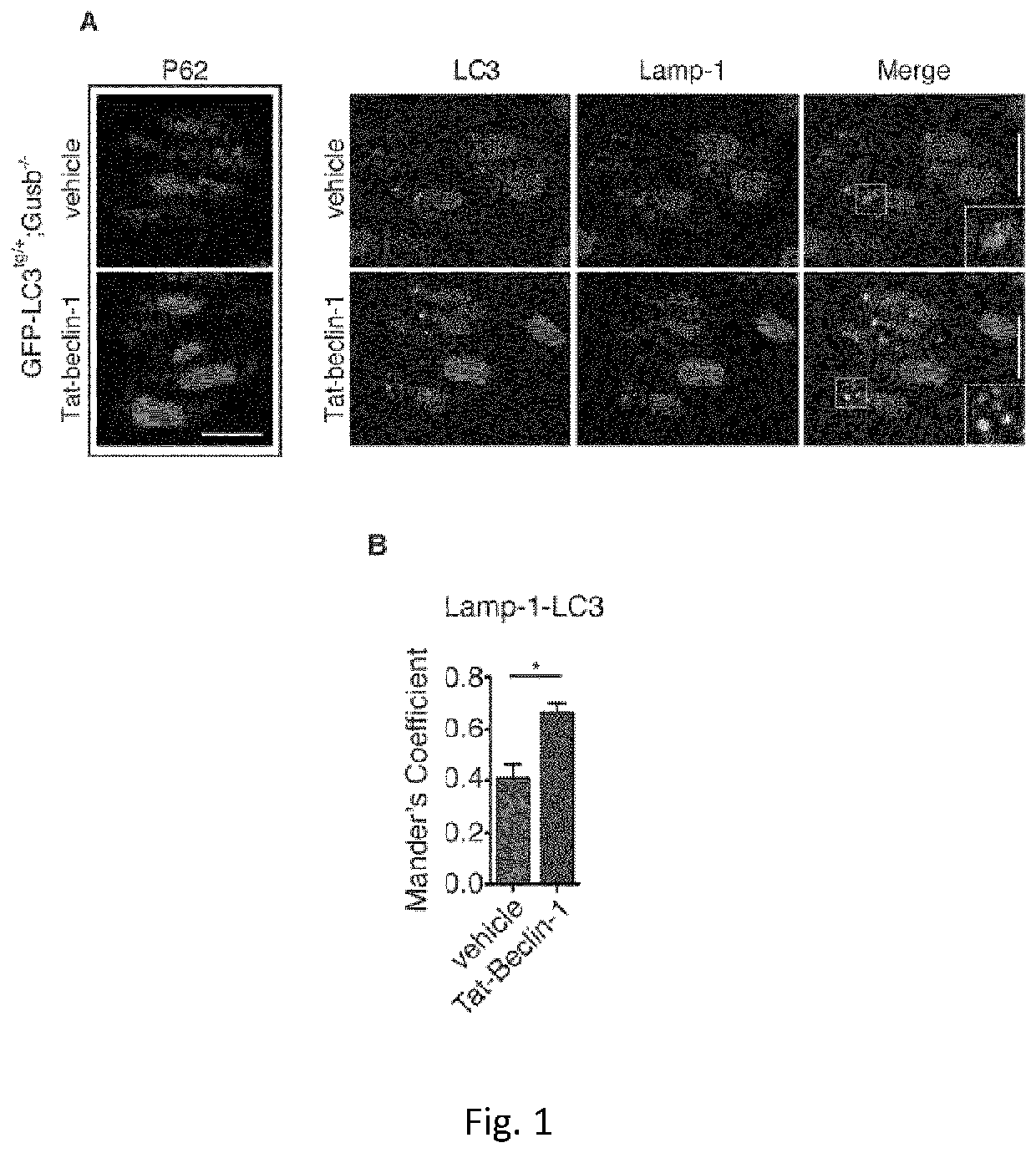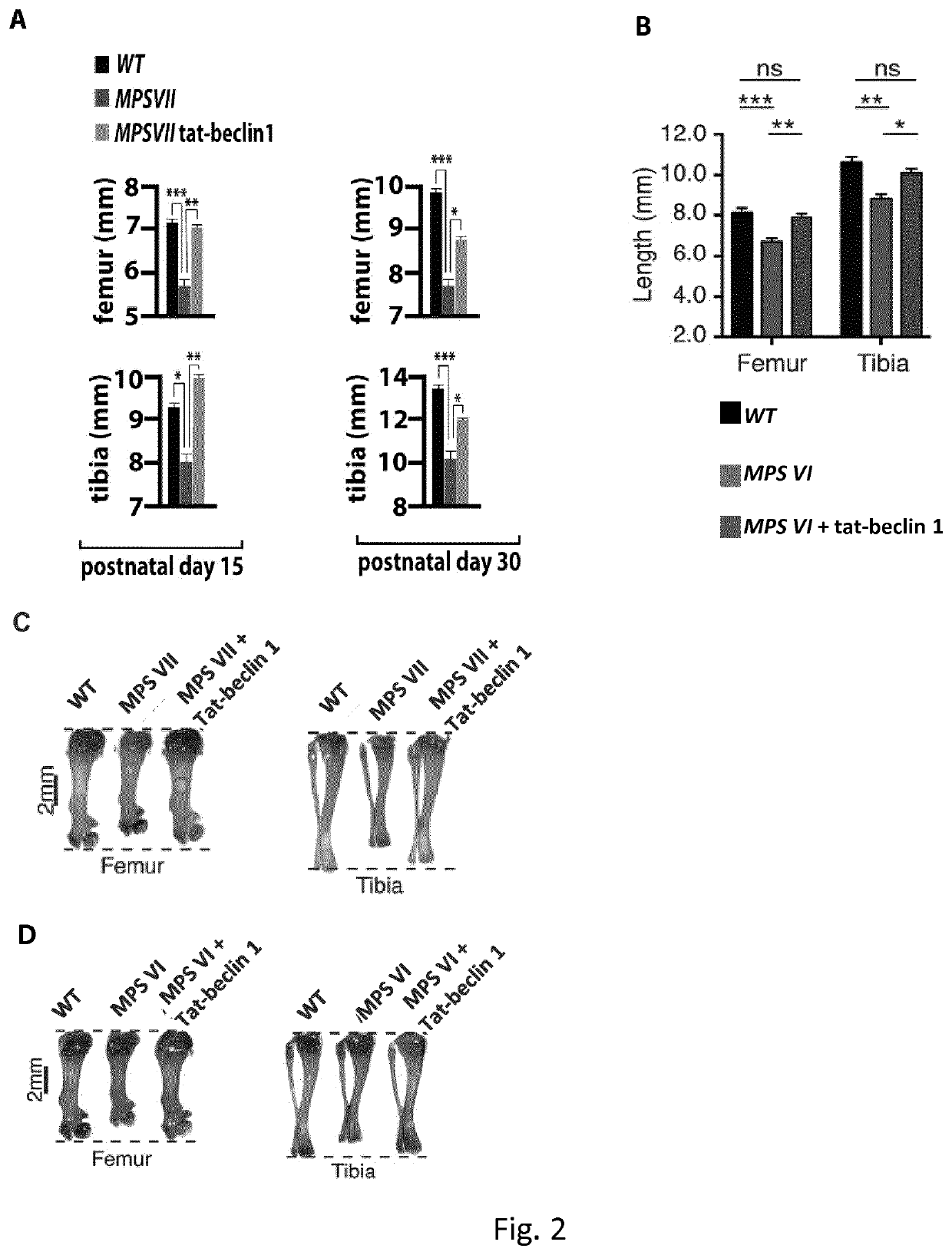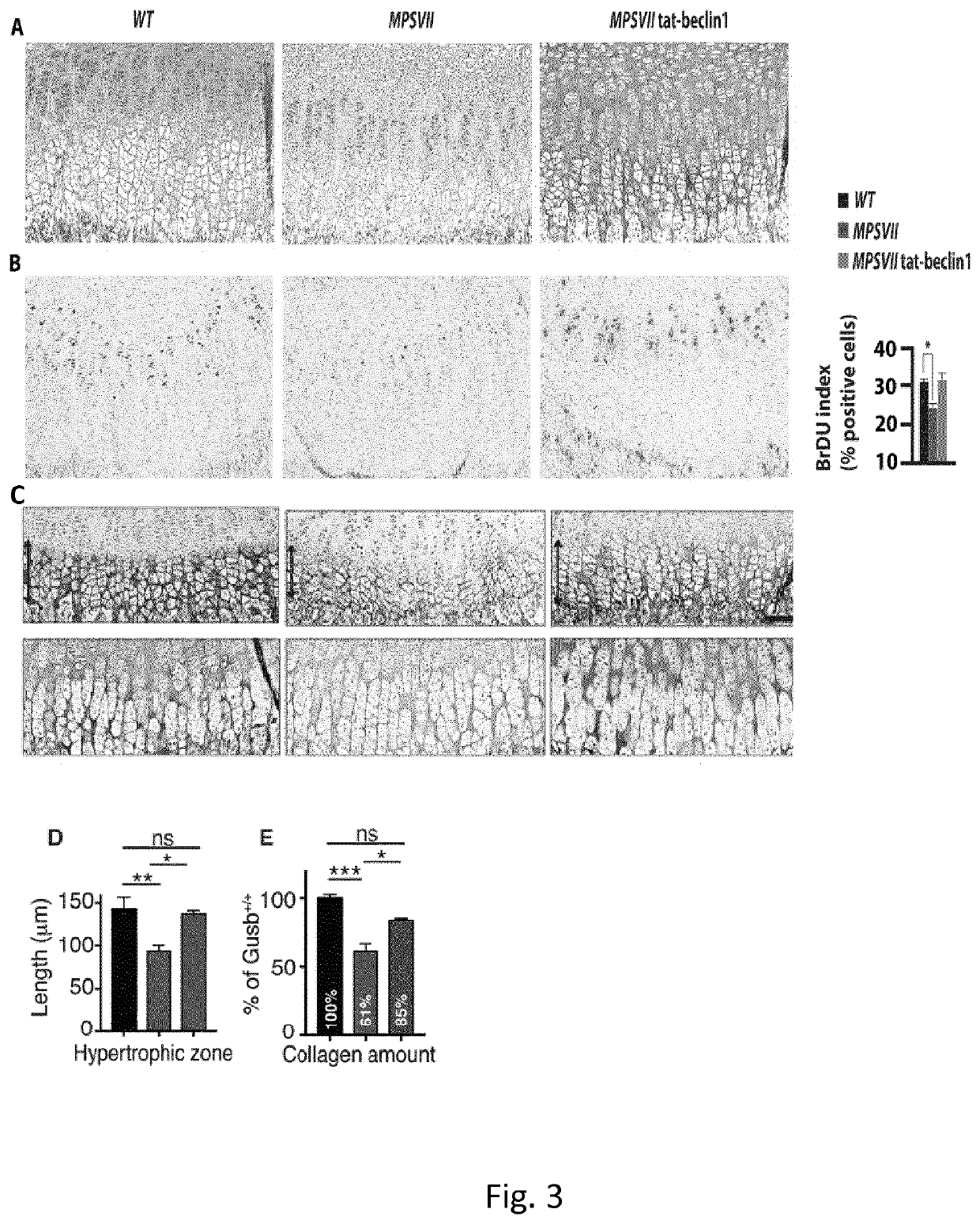Treatment of bone growth disorders
a technology of bone growth disorder and activator, which is applied in the field of activator, can solve the problems of disease group a major challenge for the health care system, bone growth disorder, and bone growth disturbance, and achieve the effect of increasing the production of phosphatidylinositol-3-phosphate, and being easy to measur
- Summary
- Abstract
- Description
- Claims
- Application Information
AI Technical Summary
Benefits of technology
Problems solved by technology
Method used
Image
Examples
example 1
n of Autophagy Prevents the Skeletal Defects Associated with LSDs
[0263]Tat-Beclin 1 peptide is capable of inducing autophagy in a cell by activating Beclin 1-Vps34 complex (see FIG. 4A1).
[0264]Daily injection of Tat-Beclin1 peptide promoted Av-Lys fusion and p62 / SQSTM1 degradation in the growth plate of MPS VII (Gusb− / −) mice expressing the fluorescent autophagy reporter GFP-LC364 (Gush− / −; GFP-LC3tg / + mice) (FIG. 1a,b).
[0265]Newborn MPS VII and MPS VI mice were intraperitoneally injected daily with retro-inverso Tat-Beclin 1 peptide (Beclin 1Activator II, retro-inverso Tat-Beclin 1, Millipore) at 2 mg / kg resuspended in PBS, according to a preferred embodiment of the invention. Control mice were injected with vehicle only. Mice were sacrificed after 15 (P15) and 30 (P30) days.
[0266]Starting at postnatal day 15 (P15) MPSVII mice show significant reduced femur and tibia lengths compared to wild type mice (FIG. 2a,c). A similar phenotype was also observed in P15 MPSVI mice (FIG. 2b, d)...
example 3
Flux Increases During Early Post-Natal Bone Development
[0273]The femoral growth plates of mice that ubiquitously express the autophagosome marker MAP1LC3 tagged with green fluorescent protein (GFP) (GFP-LC3tg / +) (Mizushima N et al, Mol Biol Cell 2004) were analyzed. Very few autophagic vesicles (AVs) were detected in the growth plates of newborn mice (P0) (FIG. 5a, quantification in 5b). Sections obtained from older mice (P2 to P8) showed a progressive age-dependent increase in the number of AVs (FIG. 5a, quantification in 5b). This observation was confirmed by TEM analysis (FIG. 9a) and biochemically by quantifying the conversion of the non-lipidated form of LC3 (LC3I) to the autophagosome-associated lipidated form (LC3II) (Kabeya Y et al., 2005) in femoral growth plates of wild type mice at different time points (FIG. 5c). In vivo inhibition of lysosomal function by Leupeptin administration further increased the levels of LC3II in the growth plate of P6 but not P2 mice, indicating...
example 4
Regulates Skeletogenesis and the Composition of Growth Plate ECM
[0274]The essential autophagy gene 7 (Atg7) was deleted in chondrocytes by crossing a mouse line carrying the Atg7 floxed allele (Atg7f / f) (Komatsu, M. et al., J. Cell Biol. 2005) with two different Cre mouse lines: 1) the Prx1-Cre line, in which the Cre protein is expressed in the mesenchymal cells of the limbs during embryogenesis (Logan M et al., Genes 2002) and 2) the Col2a1-Cre line, in which the expression of the Cre protein is mainly restricted to mature chondrocytes before and after birth (Ovchinnikov DA, Genes 2002).
[0275]The selective lack of Atg7 protein and the inhibition of functional autophagy in the femoral growth plates of Atg7f / f; Prx1-Cre and Atg7f / f; Col2a1-Cre mice was verified (FIG. 9c-f).
[0276]Atg7f / f; Prx1-Cre and Atg7f / f; Col2a1-Cre mice were born at the expected Mendelian ratio, with bones of normal shapes and sizes, suggesting that chondrocyte autophagy is dispensable during embryonic skeletal ...
PUM
| Property | Measurement | Unit |
|---|---|---|
| Disorder | aaaaa | aaaaa |
Abstract
Description
Claims
Application Information
 Login to View More
Login to View More - R&D
- Intellectual Property
- Life Sciences
- Materials
- Tech Scout
- Unparalleled Data Quality
- Higher Quality Content
- 60% Fewer Hallucinations
Browse by: Latest US Patents, China's latest patents, Technical Efficacy Thesaurus, Application Domain, Technology Topic, Popular Technical Reports.
© 2025 PatSnap. All rights reserved.Legal|Privacy policy|Modern Slavery Act Transparency Statement|Sitemap|About US| Contact US: help@patsnap.com



